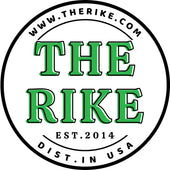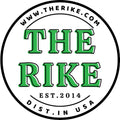From gotu kola to mullein: a practical guide to gentle herbal teas, real safety, and smart brewing
Answer: Use correctly identified, food-grade gotu kola (Centella asiatica) and mullein (Verbascum thapsus) in culinary-strength preparations only. Steep leaves/flowers briefly with just-off-boil water, strain well (mullein needs a very fine filter), and keep servings modest. Herbal tisanes are naturally caffeine-free unless blended with true tea, and they are not proven “detoxes.” Follow the safety section if you’re pregnant, lactating, have chronic conditions, or take medicines. Sources you can verify: Gotu kola – MedlinePlus/NIH, Mullein – MedlinePlus/NIH, Herbal supplement safety – NCCIH/NIH, Caffeine basics – U.S. FDA, USDA PLANTS – Verbascum thapsus.
Think garden-to-cup, not miracle-to-mug. These two herbs are popular because they’re approachable in the kitchen, but the smartest routine is still small, simple, and safety-first.
Background & common issues
What they are. Gotu kola is a low, creeping umbellifer with round, fan-veined leaves; mullein is a tall rosette-forming scroph with felted leaves and yellow flower spikes USDA PLANTS.
Evidence reality check. MedlinePlus summarizes limited human evidence for specific benefits of both herbs; quality varies by product and dose. Keep use culinary and occasional unless a clinician guides you MedlinePlus – gotu kola, MedlinePlus – mullein.
“Natural does not always mean safe. A product’s safety depends on its chemical makeup, how it’s prepared, and the dose used.” — National Center for Complementary and Integrative Health NCCIH – nih.gov
Useful statistics: Plain herbal tisanes contain 0 mg caffeine unless blended with true tea leaves FDA. Mullein commonly grows to about 1–2 m tall, which is why it’s easy to spot and harvest USDA PLANTS.
Practical framework: flavor, brewing, and use
Key terms
- Tisane: infusion from non-tea plants; naturally caffeine-free.
- Decoction: gentle simmer for tougher parts like roots; not typical for gotu kola or mullein leaves/flowers.
- Volatile aromatics: light fragrance molecules; cover the cup to retain them.
- Fine filtration: mullein’s leaf hairs can irritate throats; use a paper filter or very fine mesh.
Gotu kola (Centella asiatica) — gentle green cup
- Flavor: mild, green, slightly parsley-celery.
- Method: 1 tsp dried leaf (or 1 tbsp fresh) per 8–10 oz just-off-boil water; steep 3–4 minutes, covered; strain.
- Consider: Many people keep portions small. Avoid if pregnant or lactating without clinical guidance; review possible liver effects and drug interactions in the MedlinePlus monograph MedlinePlus – gotu kola, NCCIH.
Mullein (Verbascum thapsus) — softly floral, well-strained
- Flavor: mild, hay-honey, softly floral.
- Method: 1–2 tsp dried leaf or flowers per 8–10 oz just-off-boil water; steep 5–7 minutes, covered; strain through paper or ultra-fine mesh to catch hairs.
- Consider: Leaf hairs may irritate throats if not filtered. Use from clean, food-grade sources; avoid roadside or sprayed plants MedlinePlus – mullein, USDA PLANTS.
Culinary pairings (not medical claims)
- Gotu kola + mint: brightens the green notes; short, covered steep.
- Mullein + chamomile: soft floral cup; strain very well.
- Caffeine labeling: if you add black/green tea, mark “contains caffeine” FDA.
Tips & common mistakes
- Don’t concentrate. More herb rarely means more benefit; it often means more side effects NCCIH.
- Cover the cup. Keeps delicate aromatics in the infusion.
- Filter mullein carefully. Paper filters trap hairs better than metal mesh.
- Source food-grade herbs. Use reputable suppliers or your own unsprayed garden.
FAQ
Do gotu kola or mullein “detox” the body?
No. Your liver and kidneys already process wastes; teas and cleanses aren’t proven detox methods and can interact with medicines NCCIH – detox overview.
Are these herbal teas caffeine-free?
Yes, unless you blend with true tea leaves from the tea plant FDA.
Can I drink them daily?
Keep it culinary and modest unless your clinician advises otherwise. Review the MedlinePlus monographs for cautions and interactions MedlinePlus – gotu kola, MedlinePlus – mullein.
Safety
- Who should avoid or get advice first? People who are pregnant or lactating; children; anyone with liver, kidney, thyroid, or bleeding problems; and those on anticoagulants, sedatives, diabetes or blood-pressure medicines should seek clinician guidance before regular use NCCIH, MedlinePlus – herbal medicine.
- Allergies & irritation. Discontinue for rash, mouth tingling, cough, or throat scratchiness; filter mullein thoroughly to avoid hair irritation MedlinePlus – mullein.
- Stop if symptoms occur. Seek medical advice for dizziness, wheeze, yellowing eyes/skin, severe fatigue, or persistent stomach pain.





Leave a comment